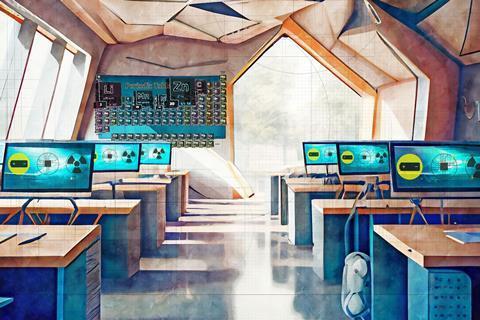How AI in Classrooms Will Revolutionize Teaching and Learning by 2025
The rapid evolution of artificial intelligence (AI) is ushering in a transformative era for educational institutions worldwide. By 2025, the integration of AI in classrooms promises to entirely revolutionize teaching and learning, making education more personalized, accessible, and effective than ever before. This complete article explores how AI-powered tools are reshaping pedagogy, what benefits students and educators can expect, real-world examples of AI in education, and practical tips for successful implementation. Join us as we dive into the future of AI-driven education and discover how your classroom can prepare for the next big leap in learning.
Table of contents
- Introduction
- the Rise of AI in Education
- Key Benefits of AI in Classrooms
- Real-World Examples and Case Studies
- AI-Powered personalization: Transforming Student Learning
- Empowering Teachers with AI Tools
- Practical Tips for Integrating AI in Classrooms
- Conclusion: Embracing the Future of Learning
Introduction: AI’s Role in Shaping Future Classrooms
Artificial intelligence is fast becoming a cornerstone of modern education. As we approach 2025, AI-driven technologies are poised to radically change how teachers teach and students learn. From intelligent tutoring systems to real-time analytics and automated grading, the possibilities seem limitless. Rather than replacing teachers, AI acts as a supportive partner — streamlining tasks, providing personalized pathways, and equipping educators and learners with data-driven insights.
The rise of AI in Education
In recent years, investment in edtech and AI for classrooms has surged.According to Gartner statistics, education-related AI software is forecasted to become a multi-billion-dollar sector by 2025.
Key drivers of this growth include:
- wider availability of high-speed internet and digital devices
- Demand for personalized learning experiences
- Need for efficient assessment and feedback mechanisms
- Teacher shortages and increasing workloads
- The global shift towards hybrid and remote learning experiences
As an inevitable result,artificial intelligence in education is no longer a distant dream — it’s fast becoming a classroom necessity.
Key Benefits of AI in Classrooms
The core benefits of integrating AI in education extend to both students and teachers:
- Personalized learning paths: Adaptive learning platforms tailor content to each student’s ability
- instant feedback: AI can provide real-time assessment and actionable suggestions
- Data-driven insights: Advanced analytics help identify learning gaps or at-risk students early
- Administrative efficiency: Automates grading, scheduling, and documentation
- Inclusive education: AI can support students with learning differences or language barriers
- Engaging content: Interactive AI-powered simulations and gamified tasks increase motivation
“By 2025, AI in classrooms will not just enhance teaching and learning, but fundamentally transform the role of educators and learners worldwide.”
— EdTech Pioneer Magazine, 2024
Real-World Examples and Case Studies
Schools and universities globally are already leveraging AI-powered classroom solutions to achieve impactful results:
- Carnegie Learning: Uses AI algorithms to power personalized math tutoring, increasing average student scores by 20%.
- Squirrel AI (China): Operates adaptive learning centers that dynamically adjust lessons to each learner’s strengths and weaknesses.
- Duolingo: Employs AI to tailor language lessons, quizzes, and motivational nudges based on user behaviour and progress.
- Content Technologies Inc.: Utilizes AI-powered platforms to create custom textbooks that update in real time according to curriculum changes.
These examples underscore how AI in classrooms is making education more scalable, equitable, and effective.
AI-Powered Personalization: Transforming Student Learning
one of the greatest strengths of AI-driven education is its capacity for hyper-personalization. No two learners are the same, yet traditional classrooms often rely on one-size-fits-all approaches. AI fixes this by:
- Assessing student progress and adapting content difficulty in real time
- Recommending targeted resources, quizzes, or remediation modules dynamically
- Supporting diverse learning styles through multimedia, audio, or visual aids
- using natural language processing (NLP) for multilingual support and accessibility
The result? Students stay engaged, learn at their own pace, and are less likely to fall behind.
empowering Teachers with AI Tools
Contrary to common fears, AI will not replace teachers. Instead, it amplifies their impact by:
- Reducing administrative burden: Automating attendance, grading, and reporting
- Enabling targeted interventions: Early warnings for struggling students allow timely, personalized support
- Facilitating lesson planning: Generating differentiated instructional materials based on class performance
- Enhancing professional development: AI analytics can reveal teaching strengths and areas for growth
With routine tasks handled by AI, teachers can focus more on creative instruction, mentorship, and student well-being.
Practical Tips for Integrating AI in Classrooms
Successful adoption of AI in education requires thoughtful planning. Here’s how schools can get started:
- Start with pilot programs: Test AI platforms in limited settings before scaling across grades or departments.
- Invest in teacher training: Ensure educators understand and feel confident managing new AI tools.
- Prioritize data privacy: Select solutions that comply with regulations like GDPR and FERPA.
- Establish clear goals: Define success metrics, such as improved student engagement or achievement.
- Encourage student feedback: Gather insights from learners about how AI impacts their classroom experience.
- foster a growth mindset: Emphasize continuous betterment and see implementation as an evolutionary journey.
Conclusion: Embracing the Future of Learning
As we speed toward 2025, the momentum of AI in classrooms is undeniable. By making education smarter,more adaptive,and inclusive,AI will revolutionize how teachers teach and students learn. the next generation of classrooms will be defined by human-AI collaboration, where the educator’s wisdom and empathy converge with the predictive power of technology.
The journey may present challenges, from digital divides to ethical questions — but the rewards are clear: greater personalization, engagement, and equity in education worldwide.Now is the time for schools to invest in AI literacy, foster innovation, and ensure all learners thrive in this bold new era.
Are you ready to join the AI-powered classroom revolution?


